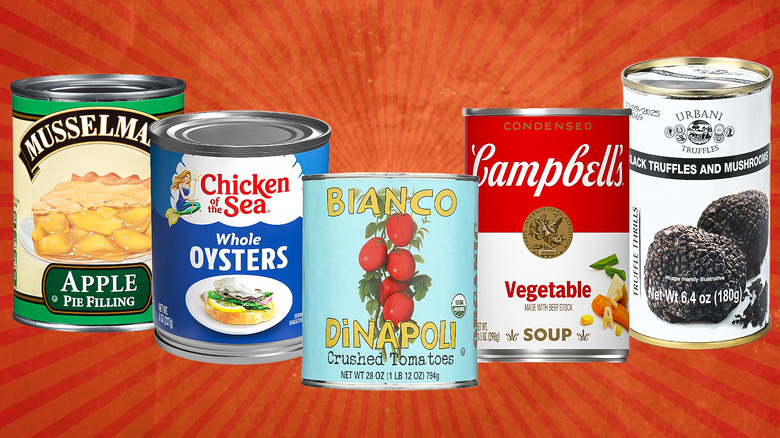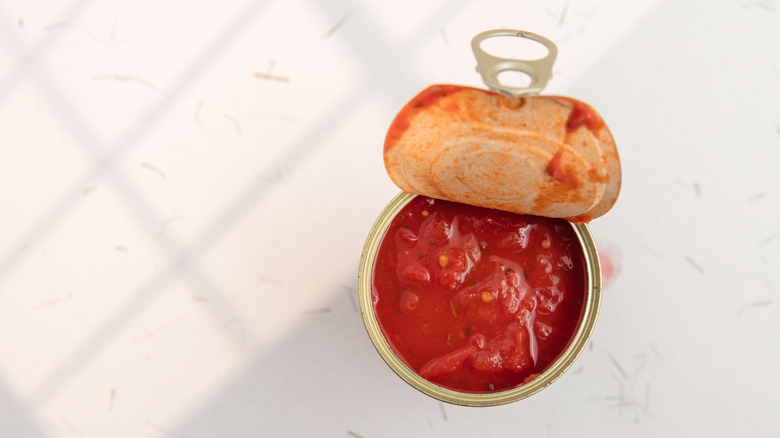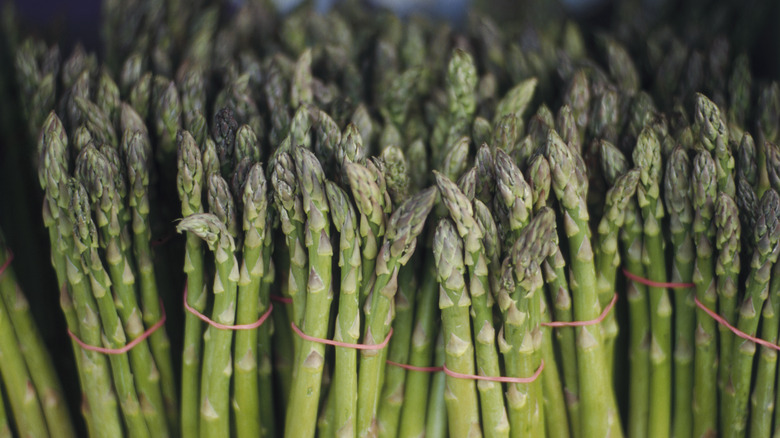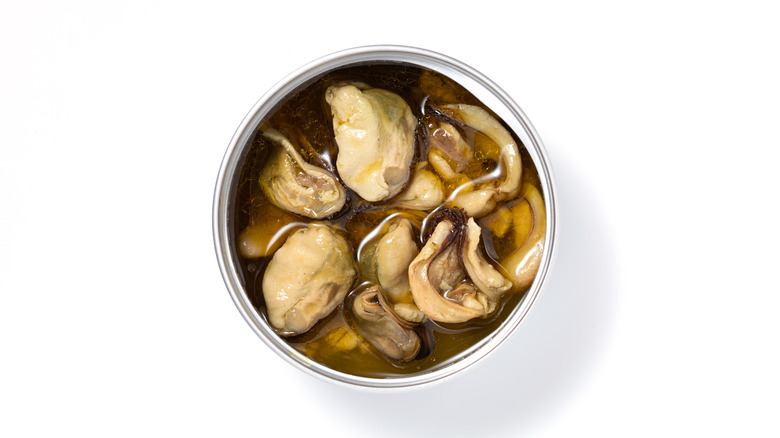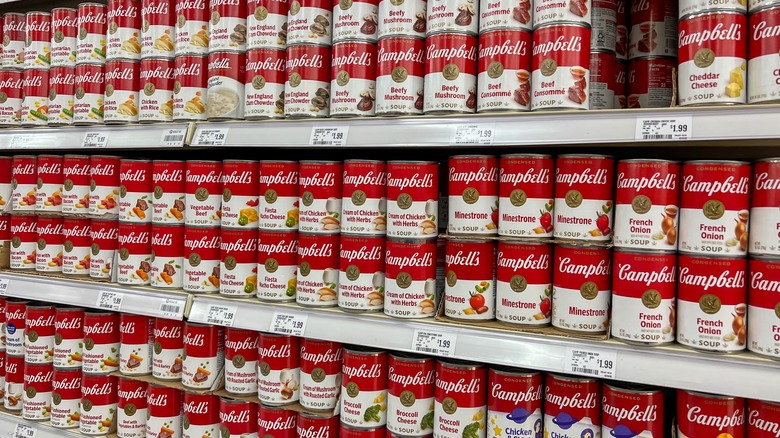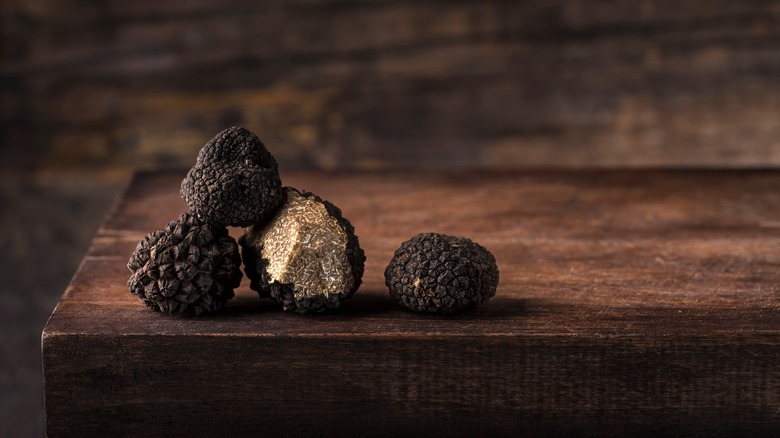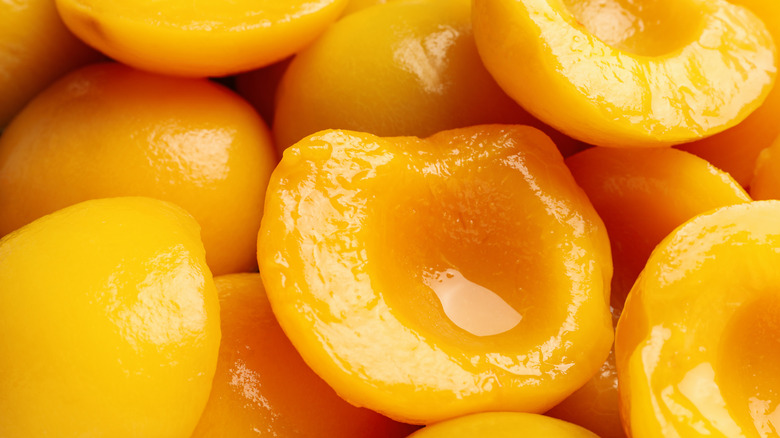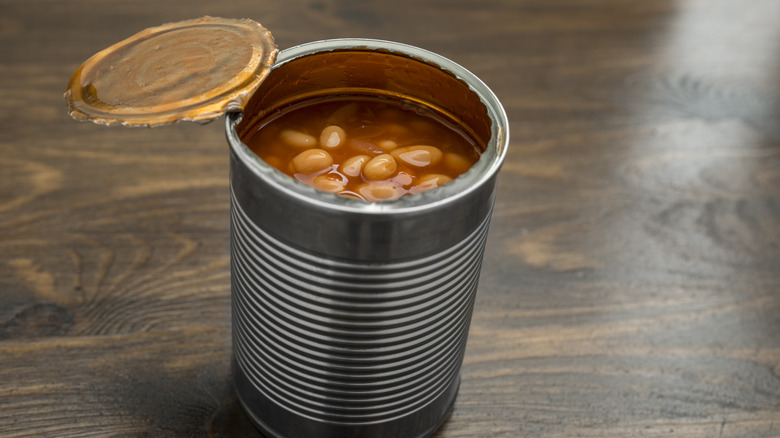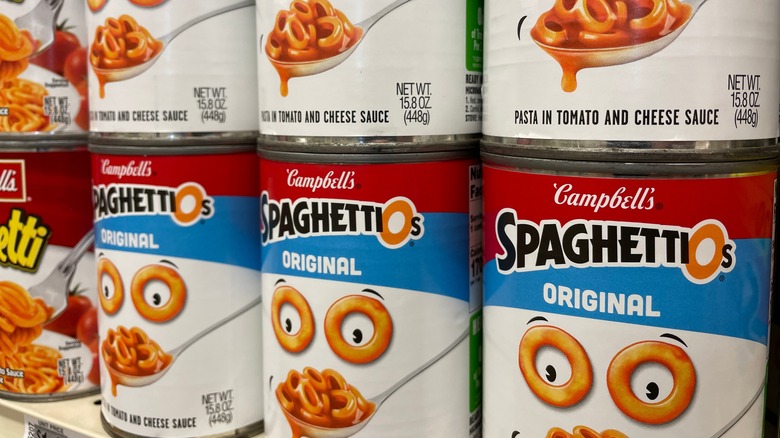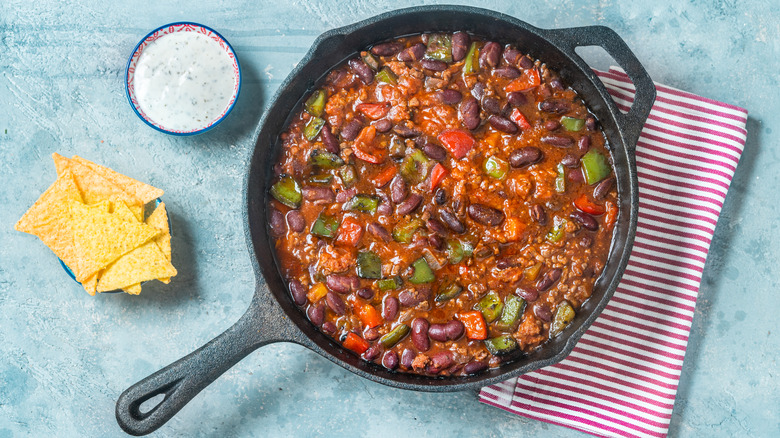12 Canned Goods That Aren't Worth The Price Tag
Canned foods have a lot of great things going for them. They're easy to store, have long expiration dates, and can be lifesavers for quick meals. Also, canned fruits and veggies are nutritionally on par with their fresh counterparts, retaining most of their vitamins and minerals through the canning process. However, not all canned goods offer good value for your money. Some are surprisingly expensive for what you get, and others simply don't compare to fresh options in terms of flavor or texture. In some cases, making a homemade version or opting for fresh ingredients can save you money while significantly improving the quality of your meals.
This isn't to say that all canned goods should be avoided — far from it. There are many canned items that are both cost-effective and high-quality. But for the purpose of this article, we're going to focus on certain canned goods that just aren't worth what they cost. Let's take a closer look at canned goods that you might want to reconsider before tossing them into your shopping cart.
Tomato sauce
At first glance, canned tomato sauce might seem like a reasonable purchase, especially if you're short on time. However, when you break down the cost-to-quantity ratio, it's clear that this convenience comes at a price. This is true across the board, but especially true when you opt for premium brands. For example, a can of Bianco DiNapoli tomato sauce can cost over $5, which, for a small amount of sauce, isn't exactly a bargain.
On the other hand, making your own tomato sauce is not only economical but also easy. All it takes is throwing some fresh tomatoes, herbs, and spices in the blender, so it's not particularly time-consuming either. What you end up with is a delicious homemade sauce that avoids the processed additives and excessive salt that almost always accompany canned tomato sauce. Plus, by making it yourself, you're not just saving money. You're also investing in a fresher, more flavorful base for your pasta dishes that only takes a few minutes extra of your time to whip up.
Asparagus
Canned asparagus is another product that really isn't worth the price tag. The canning process significantly diminishes the quality of this otherwise delightful vegetable. Fresh asparagus is known for its crisp texture and vibrant green color, but when it's canned, it often turns out mushy and dull. The flavor is also compromised, sometimes leaning towards a metallic or overly salty taste due to the sodium and preservatives used.
What makes this even more disappointing is the price. Canned asparagus can cost nearly as much as fresh, despite offering a fraction of the quality. Even opting for a budget-friendly store brand doesn't significantly lower the cost, making the value proposition of canned asparagus even less appealing. And if you're looking to add a pop of color to your dish, canned asparagus won't deliver. The dull, olive-green hue it takes on during the canning process is a far cry from the bright green of fresh spears.
Given the option, you're better off buying fresh asparagus, which can be steamed, grilled, or roasted to maintain its natural flavor and texture. The cost difference isn't substantial, and the experience of eating fresh asparagus is a huge step up compared to its canned counterpart.
Oysters
Canned oysters can be a quick and convenient way to enjoy this delicacy without the hassle of shucking and preparing fresh ones. However, what you're getting in convenience is certainly not budget-friendly. A measly 3.75-ounce can of oysters can cost around $3 or more, which can be hard to justify when the quality is subpar, falling short in both flavor and texture. Fresh oysters have a delicate taste and a firm texture that's nearly impossible to replicate in a can. Meanwhile, canned oysters often become soft and lose their natural brininess, making them a poor substitute for the real thing.
Whether enjoyed raw, baked, or grilled, fresh oysters provide a far superior culinary experience. Their rich flavor enhances all kinds of dishes in ways that canned oysters simply can't match. It's true that canned oysters might be an acceptable choice for recipes where their flavor is masked, such as in an oyster chowder, but for those who truly appreciate oysters, they generally don't offer a good value, especially when you factor in the inferior product you'll be consuming.
Soup
Soup is one of the most common canned goods found in pantries, but it's also one of the most overpriced, particularly when you consider the quality. Popular brands like Campbell's or Progresso have seen significant price increases over the years, making it difficult to justify the cost of what you're actually getting. Most canned soups are loaded with sodium, preservatives, and other additives, which can detract from the health benefits of the vegetables or proteins they contain.
Generally speaking, homemade soup is a far better option. Not only can you make a large batch that will last for several meals, but you can also control the ingredients and seasoning to suit your taste. The cost of fresh vegetables, broth, and other ingredients is often less than what you'd pay for the same quantity in cans of soup, and the flavor difference is substantial. If you're looking for a warm, comforting bowl of soup, making your own is almost always the better choice, even if it does take a little longer to prepare.
Truffles
Truffles are renowned as a luxury food item for their distinct aroma and rich, earthy flavor. However, when it comes to canned truffles, much of that signature magic is lost. Although they offer convenience, these canned varieties can be quite expensive, sometimes exceeding $10 for just a small can. Unfortunately, the canning process strips away much of the truffle's natural fragrance and richness, resulting in a product that falls short of the gourmet truffle experience.
Given the steep price tag, it's challenging to justify purchasing canned truffles when their quality falls short by a long shot. If you're aiming to indulge in the true essence of truffles, it's worth either investing in fresh truffles or exploring alternatives like truffle oil or truffle salt. These options can provide a similar taste profile at a significantly lower cost. While canned truffles might add a touch of luxury, their lack of genuine taste and value makes them far less appealing.
Peaches
Canned peaches are often marketed as a convenient alternative to fresh fruit, but they come with several downsides that make them not worth the price. One of the biggest issues is that canned peaches are often packed in syrup, which adds a significant amount of artificial sugar to what would otherwise be a healthy snack. A standard can of Del Monte peaches, for example, is packed in high-fructose corn syrup and costs around $2, which is hardly a bargain considering the nutritional compromise.
The cost comparison between canned and fresh peaches is also telling. When peaches are in season, fresh ones can often be found at a similar or even lower price per pound than their canned counterparts. Fresh peaches offer better texture, taste, and nutritional value without the added sugars and preservatives. And if you know how to store them properly, you can even extend their shelf-life.
If convenience is your priority, at least look for peaches packed in juice rather than syrup, as they're a lot healthier. Still, whenever possible, it's best to opt for fresh peaches to get the most bang for your buck.
Sweet potatoes
The convenience of canned sweet potatoes can't be denied, but they come with significant trade-offs in both quality and value. A 15-ounce can often costs over $2, making it comparable in price to fresh sweet potatoes. However, this convenience isn't all that worth it. Canned sweet potatoes are typically packed with preservatives and added sugars like corn syrup, which compromise their natural flavor and nutritional benefits.
With fresh sweet potatoes, on the other hand, you'll experience a superior taste and mouthfeel. Roasting or baking fresh sweet potatoes enhances their natural sweetness and creates a pleasingly crisp texture that canned varieties can't match. In contrast, canned sweet potatoes often have a mushy consistency and lack the robust flavor found in fresh options. Perhaps this is acceptable for certain baked items, like casseroles or pies, but when it comes to enjoying the full range of flavor and texture, fresh sweet potatoes are the clear winner.
Baked beans
When it comes to American comfort food, baked beans are a classic choice. But before you grab that can from the shelf at your local grocery store, consider this: The cost of a typical 16-ounce can of baked beans can often set you back around $2. Unfortunately, the price doesn't always reflect the quality inside. Canned baked beans tend to be overly sweet and carry a processed flavor that pales in comparison to the homemade variety.
Making baked beans from scratch is not only more affordable but also offers greater control over flavor and texture. Dried beans, which are the most economical option, typically cost just a fraction of the price of a can. A bag of dried beans can yield several servings and allows you to season them to your liking, avoiding the excessive sugars and preservatives found in canned versions. Even if you opt for pre-cooked canned beans as a base to save time, adding your own ingredients like onions, bacon, and spices can elevate the dish while keeping costs much lower than buying prepared baked beans in a can.
Chicken
Imagine reaching for a can of chicken, hoping to find a quick, tasty protein. Instead, you get a dry, bland version that's far from satisfying. Priced at around $2 for a modest 5-ounce can — and more if you're choosing a gourmet brand — canned chicken is a convenience that's not all that cheap considering the quantity and quality you receive.
While it might be a tempting shortcut for dishes like quesadillas where the chicken isn't the main highlight, for the majority of recipes, fresh chicken delivers a juicy, flavorful experience that you will never get with canned chicken. And if you consider the cost per ounce, buying fresh chicken on sale often results in a price that's comparable to, or even less than, canned chicken. Using fresh chicken also allows you to cook with tasty herbs and veggies, infusing their flavors throughout the meat and creating a more dynamic and satisfying dish. This method provides a healthier, more natural meal without the need for excess sodium or preservatives.
Apple pie filling
If you're gearing up to bake a homemade apple pie, don't let convenience tempt you into buying canned filling. At around $2 for a 20-ounce can, you're not only paying a premium for an ingredient loaded with high-fructose corn syrup and artificial flavors, but you're also compromising on taste and quality. Fresh apples, on the other hand, allow you to create a pie that's truly exceptional. Sure, it may take a bit more time to prepare, but that's part of the fun of baking.
Selecting fresh apples also means you can choose the ideal variety for your pie — be it the tartness of Granny Smith or the sweetness of Honeycrisp. You gain complete control over the sugar content, ensuring a more balanced flavor. Fresh apples hold their texture and juiciness beautifully while baking, something canned filling can't replicate. Surprisingly, when you consider the cost per pound, fresh apples often come out just as affordable, if not more so, than canned filling. So, even though using fresh, homemade apple pie filling is more time-consuming, the flavor you achieve makes it a deliciously worthwhile endeavor.
Pre-cooked pasta
Pre-cooked, canned pasta dishes, like ravioli or spaghetti and meatballs, might appear to be a budget-friendly and time-saving option, often costing approximately under $2 per can. However, these convenience foods come with significant trade-offs in terms of quality, flavor, and nutrition. The pasta in these cans tends to be overly soft and mushy, lacking the al dente texture that makes freshly cooked pasta so enjoyable. The sauces are often too sweet or too salty, with a processed taste that doesn't come close to the rich, robust flavors of homemade sauces.
The reality is that preparing pasta from scratch is both quick and inexpensive anyway. A box of dry pasta and a few simple ingredients for a homemade sauce can provide a meal with a taste and texture far better than anything you'd find in a can. The satisfaction of enjoying a freshly made pasta dish, tailored to your taste, is well worth the minimal extra effort it requires. In the end, canned pasta simply isn't worth the price when you consider the compromise in quality and the ease of making it fresh.
Chili
People often turn to canned chili for its convenience. It's a quick and easy meal solution for busy weeknights. The appeal of just opening a can and heating it up is hard to beat when time is tight. However, is that convenience worth it? We're not so sure. A standard 15-ounce can typically costs between $2 to $3. It's packed with preservatives and excess sodium, and eating processed food is never all that good for you. Plus, canned chili flavor tends to taste pretty one-dimensional, with a texture that can be disappointingly mushy.
Making chili from scratch does more than just improve the taste. When all is said and done, it's also more cost-effective. The individual ingredients for homemade chili, such as beans, tomatoes, and ground beef, are relatively inexpensive, and you can cook up a large batch that can be enjoyed over several meals or frozen for later. In the end, canned chili might get the job done in a pinch, but it's the complex flavors, satisfying texture, and overall value of a homemade batch that truly warm the soul and make every bite worth savoring.
